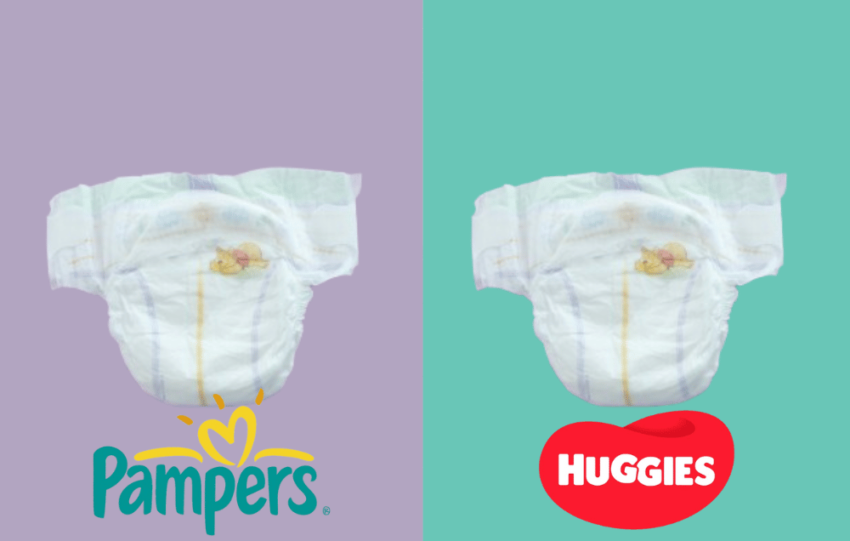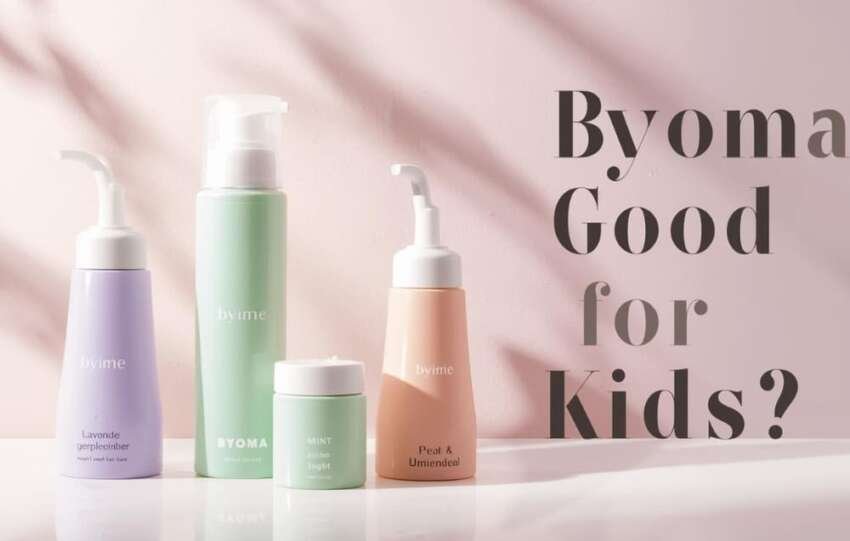When it comes to caring for a baby’s sensitive skin, there are plenty of resources given on options like shampoos and lotions but one thing that isn’t often thought about is protection. Baby skin is thinner and loses moisture 2–3 times faster than adult skin, making it vulnerable to dryness, rashes, and irritation (Journal of Pediatric Dermatology, 2013). That’s also why finding a natural oil to use for moisturizing and massage can feel like such an important choice.

As a mom, I remember standing in the baby aisle, confused by all the oil options: coconut and jojoba, almond, even olive oil. I simply wanted something gentle that wouldn’t irritate my baby’s skin. I eventually discovered that coconut oil was great for dry patches and the cradle cap, while jojoba oil was lighter and perfect for general use. In this post, we’ll compare coconut oil vs jojoba oil for babies, including benefits, downsides, and best uses. We’ll also cover the most common parent questions, what’s the best oil for eczema, cradle cap, diaper rash, and everyday moisturising, all backed by real research and real-life parenting experience.
Why Do Babies Need Oil for Their Skin?
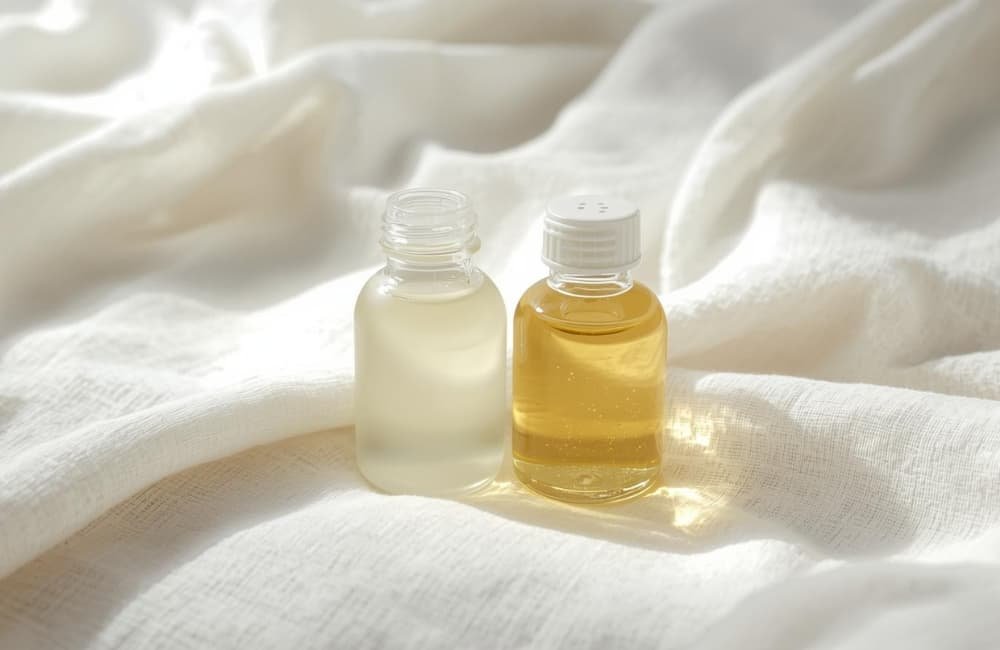
Baby skin is not the same as adult skin. It’s more delicate, it’s more sensitive, and the skin’s natural barrier is less potent. That is why babies can let water go more quickly and tend to dry faster. They are also more likely to get irritated, rashes and infections if the skin barrier is weaker. Oils are protective coatings. They help seal in moisture and reduce dryness, while also protecting the skin’s barrier. I found that coconut oil helped with rough patches and jojoba was really great for on-the-go moisturizing.
All babies are different, but with some experimenting, you’ll soon figure out your little one’s preference. Some oils even possess natural antibacterial or anti-inflammatory properties, which can be gentle on conditions like cradle cap or mild eczema. Regular oil massage does more than just spare the skin. It may aid circulation, relax the baby, and help with sleep. The perfect oil is neither heavy nor oily; it moisturizes while leaving the skin soft and healthy.
Coconut Oil for Babies
A study published in Dermatology Research and Practice (2013) found that individuals with dry skin experienced improved hydration and skin barrier function when using coconut oil. It is believed to be safe, particularly when it is cold-pressed and unrefined. Parents have used it for massage, as a moisturizer and to ameliorate the effects of cradle cap for generations in traditional ways. Coconut oil is another natural remedy to heal the condition. Read on to see the pros and cons and decide whether it is right for your baby.
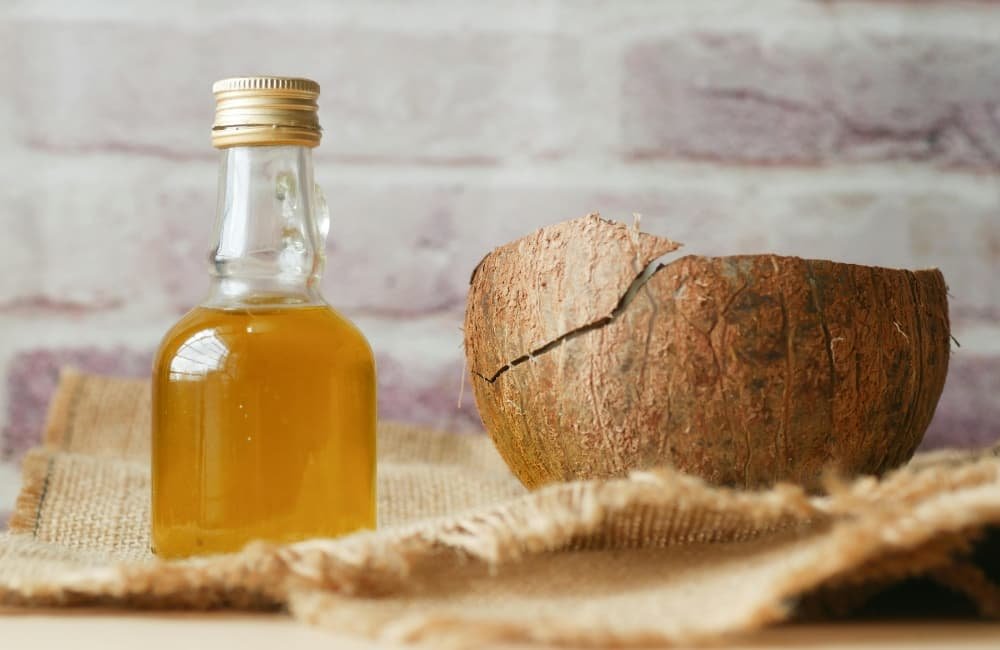
Benefits of Coconut Oil
- Lauric acid is a kind of fat, a fatty acid, that’s found in coconut oil and even other kinds of oils, such as breast milk. This is what makes it good for preventing minor infections and soothing irritated skin.
- The oil also conditions chapped spots and can help to lift cradle cap flakes from the scalp. Regular use can help eliminate dryness and leave skin softer in the long term.
- When applied to the skin, coconut oil serves as a natural protectant. Slathering it on your face is like putting a protective shield up against environmental evildoers such as wind, cold air, or even friction from your clothing.
Risks of Coconut Oil
- It can also be slightly greasy on the skin and may not work as effectively in hotter weather or for daily use.
- Your baby may develop a rash or redness, so to prevent itchy skin and redness. Test it out with a patch first before applying it to larger areas of your skin.
- These skin impurities may lead to baby acne or minute rashes on the baby’s body.
Jojoba Oil for Babies
Jojoba oil is good for even babies. It is also hypoallergenic, gentle and comes close to the composition of your skin’s own oils. Jojoba oil has been shown to be very compatible with human skin, and in a study published in Pharmacological Research (2017), they stated that its resemblance to sebum (the skin’s natural oil) makes it safe enough to apply directly on the face without causing irritation. It’s lightweight and fast-absorbing, making it an ideal option for daily use. Learn more about the major pros and cons below to help you determine if this is a good decision for your baby.
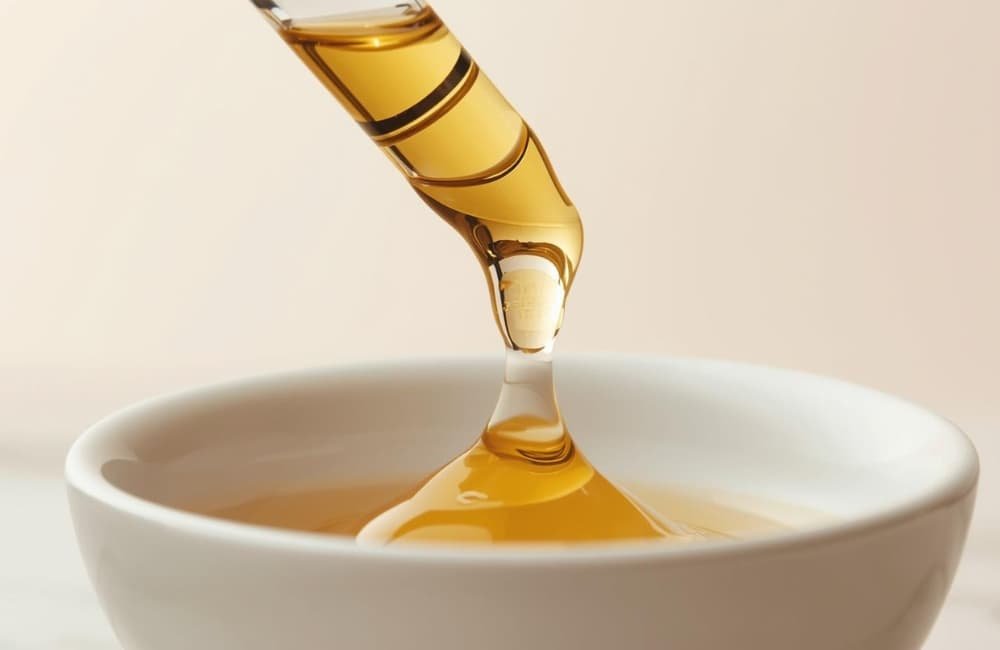
Benefits of Jojoba Oil
- The sebum of our skin is mimicked by jojoba oil. That also makes it far less likely to irritate or damage the skin’s barrier.
- Jojoba is the closest thing you can get to your skin’s natural oils, and it sinks in without that greasy residue. This is what makes it great for daily use and perfect for those who work or live in hot and humid places.
- Jojoba is non-comedogenic and has skin-calming and soothing properties, making it suitable for babies with sensitive skin or mild eczema. It reduces the redness, and in due time, your skin may be softer and healthier
Risks of Jojoba Oil
- It does not have quite as strong an action against bacteria or fungi as coconut oil. Coconut oil may offer additional protection for babies prone to frequent skin infections.
- It is generally more costly and less commonly sold than coconut oil. Not as convenient for the parents of the application over the whole body, a rubdown.
Coconut Oil vs Jojoba Oil for Babies
| Feature | Coconut Oil | Jojoba Oil |
| Similarity to skin oils | Low | Very high |
| Antibacterial action | Strong | Mild |
| Texture | Heavy, greasy | Light, smooth |
| Absorption | Slow | Fast |
| Allergy risk | Rare, possible | Very rare |
| Cost | Affordable | Higher |
| Best for | Dry skin, cradle cap | Sensitive skin, daily use |
Other Baby Oils: How Do They Compare?
Parents often ask about other oils. Here’s how coconut oil and jojoba oil stack up against familiar options:
Olive Oil
Olive oil is moisturizing as well as full of antioxidants like Vitamin E, so it’s good for baby skin. However, some research suggests that regular, long-term use may weaken the skin barrier in sensitive or eczema-prone babies. It can also be thick and greasy, particularly in hot weather, making it less ideal for everyday use.
Almond Oil
Almond oil is softening and soothing and has been traditionally used for baby massage in many parts of the world. Rich in Vitamin E and fatty acids, it softens dry patches and bumps. The only downside is that it contains nuts, so there is a risk of allergic reactions; therefore, parents should always patch test before using it on their baby.
Sunflower Oil
Sunflower oil is thin, non-greasy and common, which is why it is a parent-friendly choice. Studies have shown it helps to repair the skin barrier and lock in moisture, even for sensitive skin. It does not have the same level of antibacterial strength as coconut oil, but it is well-tolerated and is often recommended for baby skincare in its cold-pressed form.
Which Oil Should You Choose?
For Eczema or Sensitive Skin: Jojoba Oil
Most similar to the natural oils in our skin, Jojoba Oil is an easy and gentle oil, making it suitable for people with sensitive and eczema-prone skin. It soaks in really fast, soothes irritation and is less likely to clog your pores.
For Cradle Cap or Diaper Rash: Coconut Oil
If you don’t already have a jar of coconut oil in your pantry, get some right now. Coconut oil is also extremely antimicrobial and due to its lauric acid. That makes it wonderful as an aid to lifting cradle cap flakes and calming a baby’s diaper rash from either moisture or irritation.
For Dry Climates: Coconut Oil
This can be even faster in drier or cooler weather, when the baby’s skin can lose more moisture. Coconut oil also forms a stronger barrier over skin to lock in moisture and prevent dryness.
For Humid Climates: Jojoba Oil
Oversized oils can also feel suffocating when the air is hot and humid. Jojoba oil is not greasy or sticky and typically does not cause skin irritation, making it suitable for regular use, even in sweltering, hot, and humid conditions.
How to Massage Your Baby with Oil? (Step-by-Step)
Oil massage for your baby not only nourishes the skin but also strengthens the bond, allowing for better blood circulation, which in turn can help them sleep better. Follow these simple steps:

1. Choose the Right Oil
Opt for a cold-pressed, unscented, organic oil, such as coconut or jojoba. Stay away from oils that contain chemically added fragrances or additives or even essential oils, for the sensitive baby skin.
2. Warm a Few Drops
Place a small amount of oil in your hands and rub them together until the oil is warm. Warm oil is soothing and helps prevent sudden contact with cold temperatures.
3. Start with the Legs & Feet
One leg at a time from thigh to ankle, stroking in nice circular motions. Gently rub the feet, which, when done lightly, can be very relaxing and ensure healthy blood circulation.
4. Massage the Arms & Hands
Stroke downward from the shoulder to the fingertip. Ouchie, gently open your baby’s hands and massage each little finger. This muscle relaxation can have long-term benefits, even as fine motor skills develop.
5. Move to the Chest & Tummy
On the tummy, go clockwise around and around through the natural digestive flow. This can help with gas, colic, or just a little tummy ache. Make outward strokes from the chest toward the shoulders to open up breathing.
6. Finish with the Back & Scalp
Lay your baby on their tummy and with flat palms, stroke from the neck down to the bottom. For the scalp, gently rub a few drops into the skin with your fingertips in little circles, which is also good for cradle cap.
7. Keep It Short & Comfortable
The baby massage session ought to take only 10/15 minutes. Keep an eye on your baby’s reactions, and if she looks fussy or uncomfortable, take a break and try again later. Ensure the room is warm and free from drafts when receiving a massage.
What are the Common Mistakes Parents Make with Baby Oils?
Even natural oils need to be used correctly. Here are some mistakes parents should avoid:
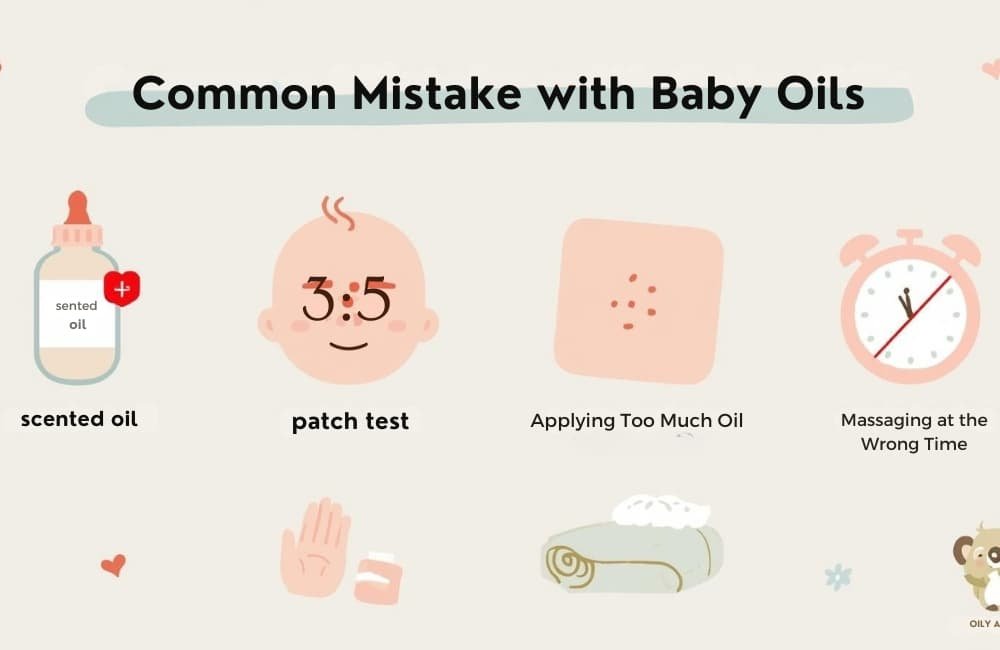
1. Using Scented or Mineral Oils
Many commercial baby oils contain synthetic fragrances, preservatives, or mineral oil. These can irritate delicate skin and sometimes trigger allergic reactions. Always choose cold-pressed, fragrance-free, and natural oils, such as coconut or jojoba.
2. Applying Too Much Oil
A baby’s skin only needs a thin layer. Over-applying can clog pores, cause stickiness, and increase the risk of heat rashes in humid weather. A few drops massaged gently are usually enough for the whole body.
3. Skipping the Patch Test
Even natural oils can cause irritation in some babies. Without a patch test, parents risk unexpected rashes or redness. Always test a drop of oil on your baby’s inner arm or thigh and wait 24 hours before using it full strength.
4. Applying Oil to Broken or Inflamed Skin
Oils can trap bacteria and block healing when applied to cuts, open rashes, or inflamed areas. For such conditions, it’s better to follow pediatric advice instead of using oils.
5. Massaging at the Wrong Time
Massaging right after feeding can make babies uncomfortable or cause them to spit up. The best time is before bedtime or after a bath when your baby is calm and relaxed.
6. Using Unrefined or Non-Organic Oils with Impurities
Low-quality oils may contain chemical residues or additives that harm sensitive skin. Look for labels that indicate organic, cold-pressed, and 100% pure ingredients.
7. Ignoring Climate and Skin Type
Some oils are too heavy for humid climates and may cause stickiness, while others may not give enough protection in winter. For example, coconut oil is great for cold weather, while jojoba oil works better in hot and humid conditions.
FAQs
Coconut oil works best for dry skin and cradle cap, while jojoba oil is gentler and ideal for sensitive or eczema-prone skin.
Jojoba oil is lighter and absorbs quickly, making it ideal for daily use. In contrast, coconut oil is richer and more protective against dryness or rashes.
Jojoba oil is often preferred for newborns since it closely resembles natural skin oils and is hypoallergenic.
No, baby oil doesn’t lighten skin; it only moisturizes and helps keep it soft and healthy.
No oil can change a baby’s natural complexion, but coconut, jojoba, or almond oil can keep skin soft and glowing.
Yes, in small amounts, coconut oil can relieve dryness, but use it sparingly as it may clog pores.
Conclusion
Coconut oil and jojoba oil are both safe, natural choices for baby skincare. Coconut oil is most effective for addressing dryness, cradle cap, and providing a strong protective barrier. Jojoba oil, on the other hand, is lighter and absorbs quickly, making it a better choice for babies with sensitive or eczema-prone skin. The right choice depends on your baby’s skin type, the climate you live in, and your daily routine. Some parents even use both coconut oil for problem areas, such as the scalp or dry patches, and jojoba oil for everyday moisturizing.

